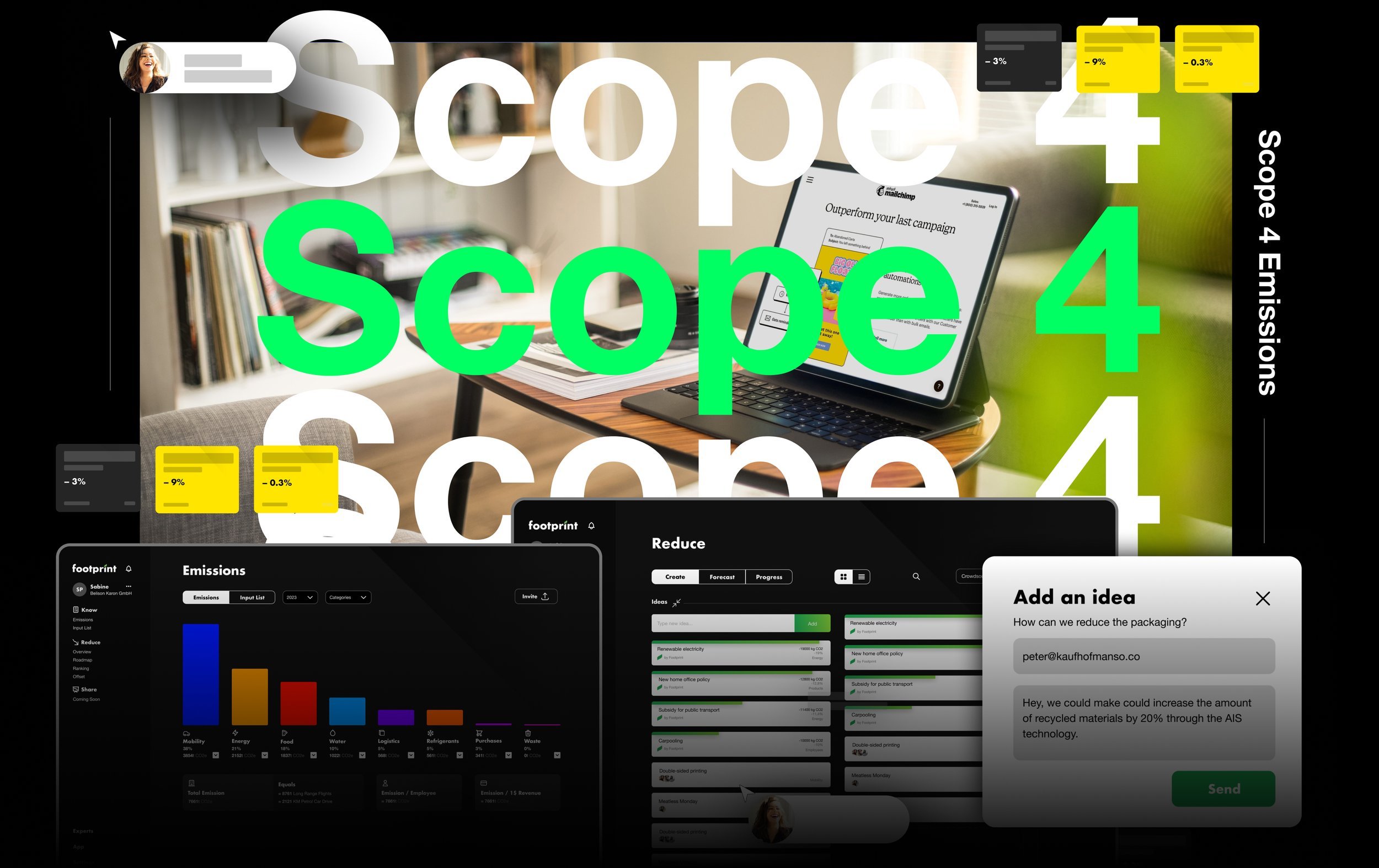What is Scope 4 - and why it matters for your business
Have you heard of Scope 4 emissions? It's a term that refers to indirect greenhouse gas emissions that are produced as a result of using a product or service, but are not part of the product's lifecycle or value chain. These emissions are important to consider and understand for companies looking to reduce their environmental impact and improve transparency.
In this article, we will explain what Scope 4 emissions are, why they are important, and provide a new perspective on the concept.
First, let's review Scopes 1, 2, and 3 emissions.
Scope 1: covers direct emissions from sources owned or controlled by a company, such as office buildings and company vehicles.
Scope 2: covers indirect emissions from the consumption of purchased electricity, heating, and cooling.
Scope 3: covers all other indirect emissions that occur outside of a company's direct control, such as emissions from business travel and the use of a product.
What is Scope 4?
The expression "Scope 4" was created by the World Resources Institute and was part of the GHG Protocol that was established in 2013. The GHG Protocol defined avoided emissions as reductions in emissions that occur beyond the lifecycle or value chain of a product, but are still a result of the product's use.
The term “Scope 4” is used to refer to additional indirect emissions beyond the three traditional scopes, such as emissions from the extraction, production, and transportation of the raw materials used in a company's products.
Currently, there are no mandatory requirements for reporting Scope 4 emissions and no widely recognized standards for measuring them for carbon accounting.
Scope 4 emissions as part of sustainability strategy.
Companies should keep in mind the concept of scope 4 emissions and avoided emissions when formulating their sustainability plans. By being mindful of scope 4 emissions, businesses can determine the potential benefits of investing in eco-friendly initiatives and make informed decisions to decrease their carbon footprint.
An example of a company that might include additional indirect emissions beyond the three traditional scopes and refer to them as "Scope 4" emissions could be a company that uses a lot of natural resources in its products, such as a paper or wood products company.
A company wishing to track scope 4 emissions may be using materials with low-carbon impacts during extraction etc. in their products, compared to another company's verion of a similar procuct (all else being equal). The difference caused by the choice of materials make up scope 4 emissions of the first company's product.
Scope 4 is connected to the emissions to the core of your offering: your products and services - and what emissions they avoid.
Why is reporting on avoided emissions important?
Even if we reach the most optimistic targets for achieving net zero emissions, we will still be exceeding the 2-degree warming limit by 2030, making it necessary for innovation to play a key role in meeting these goals.
The reporting of avoided emissions enables companies to assess the potential outcomes of creating more environmentally friendly products and helps to increase transparency for stakeholders. Companies can choose to allocate resources to R&D in a way that doesn't lead to increased emissions or to invest in innovation that may temporarily increase emissions but result in greater reductions in the long run.
As scope 4 emissions are indirect and often difficult to measure, it is important for companies to understand them and develop strategies to reduce them, like sourcing from low-carbon suppliers or transitioning to renewable energy sources.
How are avoided emissions calculated?
Calculating avoided emissions can be challenging because they are not direct emissions, but it is still possible to do so.
The Footprint platform offers a solution by analyzing emissions, suggesting ways to reduce emissions, managing implementation, and engaging customers.
Using the company's carbon footprint, the platform provides reports that can be used to compare progress and track changes over time.
In Summary
Unlike Scopes 1-3, which primarily focus on emissions a company directly or indirectly produces, Scope 4 is focused on the emissions avoided through the use of a company's products or services.
This makes it the most positive communication a brand can have, as it represents the real climate impact of the brand's efforts.
By adopting this comprehensive perspective, companies can view sustainability as an opportunity to innovate, rather than an obligation. The use of Scope 4 emissions data can help companies identify potential emission reductions throughout their value chain, leading to a more sustainable business model.
Are you for ways to reduce emissions but don't know where to start? Footprint can help.
Our team can work with your company to develop a customized strategy that fits your unique needs and goals. With our support, you can take meaningful steps towards a more sustainable future and make a positive impact on the environment.



